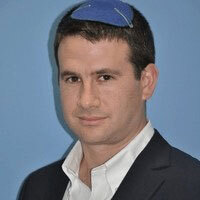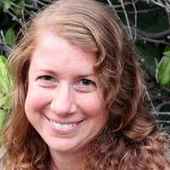Complete Blood Count Test with Two Drops: An Interview with the CEO and Co-founder of Sight Diagnostics
MHA Search
For the latest academic year, we have 170 schools in our MHAOnline.com database and those that advertise with us are labeled “sponsor”. When you click on a sponsoring school or program, or fill out a form to request information from a sponsoring school, we may earn a commission. View our advertising disclosure for more details.
“As we’ve seen with the novel coronavirus outbreak, if not properly managed, infectious diseases have the ability to completely overwhelm the world’s healthcare system…This fundamental shock to our healthcare system shows the need to harness the power of AI to collect and analyze massive amounts of data to derive meaningful conclusions on a population—and use the information to make impactful, scalable decisions system-wide.”
Yossi Pollak, Sight Diagnostics CEO and Co-founder
Two years ago Sight Diagnostics launched OLO, a device that performs a complete blood count test (CBC) from a finger prick, and is available now available across the world including in the U.S., Europe, and Asia. The technology captures and analyzes images of the blood sample using digital fluorescent microscopy and machine-learning algorithms. OLO reports CBC test results in 10 minutes.
Sight Diagnostics was founded in 2010 by Yosi Pollak, a machine vision tech leader, and Daniel Levner, a senior scientist at Harvard’s Wyss Institute for Biologically Inspired Engineering. The company first made its mark with the introduction of Parasight, a test that uses the same groundbreaking technology to diagnose malaria. A study published in the Journal of Clinical Microbiology found that ”The distribution of the device at strategic locations will lead to improved disease treatment and screening, ultimately resulting in an expedited roadmap to eradication.” Parasight is now being used in 25 countries.
With OLO, Israeli startup Sight is delivering on what Silicon Valley Theranos couldn’t. The difference? Levner told Forbes that while Theranos was using an “all or nothing” approach, Sight is going about their work in a more diligent, gradual way.
How OLO Works
CBC tests are used to evaluate overall health as well as diagnose a variety of conditions. Some of these include anemia, infection, inflammation, bleeding disorders, and cancer.
Three types of cells are evaluated in a complete blood count test: red blood cells (RBC count, hemoglobin, hematocrit, physical features); white blood cells (WBC count, differential); and platelets (count, mean platelet volume, platelet distribution width).
The American Association of Clinical Chemists (AACC) suggests individuals request a CBC “as part of a routine medical exam; when you have signs and symptoms that may be related to a condition that affects blood cells; at regular intervals to monitor treatment or disease status or when you are receiving treatment known to affect blood cells.”
Now available in moderately complex laboratories in the U.S. with FDA 510(k) clearance, the OLO technology is most cost-effective in low-volume settings. Designed to be simple, accurate, and reliable, the OLO test kit includes a disposable cartridge, dropper cap and micro-capillary tube, and a mixing bottle. The required two drops of blood can be collected by a finger prick or venous draw. The self-contained kit is sample-ready in seconds using its patented live monolayer technology.
The blood sample is then placed into the testing instrument and imaged by a specialized multi-channel microscope. Sight’s algorithms differentiate the cells and identify anomalies, and a combination of AI and machine vision analyzes the images. Results are calculated based on an analysis of factors such as cell size and shape, and intracellular morphology. Within minutes results can be read from the screen, printed out, and mailed.
Early on in the pandemic, OLO was employed to do CBC testing of Covid-19 patients at Sheba Medical Center. Located near Tel Aviv, Sheba was named one of the world’s top ten hospitals in 2019 by Newsweek. In addition to providing quick results in monitoring hospitalized coronavirus patients, the use of OLO provides a safeguard for hospital staff by reducing the risk of contamination.
Meet the Expert: Yossi Pollak, CEO and Co-founder of SIGHT Diagnostics

Sight Diagnostics CEO and co-founder Yossi Pollak began his career as an algorithm developer and project leader for an Intel subsidiary, Mobileye, a leader in the emerging, autonomous MaaS (mobility as a service) industry. Pollack has a bachelor’s of science degree in mathematics from the Hebrew University of Jerusalem and an MBA from INSEAD in Fontainebleau, Île-de-France. His first-place win at the school’s Business Venture Competition laid the groundwork for the launching of Sight Diagnostics, which now has offices in London, New York City, and Tel Aviv.
Yossi Pollack graciously shared his perspective on how the company’s groundbreaking technology has revolutionized the industry and plans to continue innovating diagnostic testing.
The Future of Safe and Simple Diagnostic Testing: Q&A With CEO Yossi Pollak
Q: How is Sight revolutionizing diagnostic testing?
A: Sight’s guiding principle, based on the belief that the faster the diagnosis, the sooner the treatment, pays service to its goal of “improving health through fast and accurate diagnostic testing.” Hence the idea behind creating a device that performs the most commonly ordered blood test, the CBC, in the time it takes to make a cup of tea. OLO delivers a complete blood count with a five-part differential in ten minutes.
Q: How is Parasight distinct from other detection methods for malaria and what are the advantages of its use?
A: There are several legacy malaria tests that each have setbacks when it comes to time, identification of malarial species, or measuring the severity of the infection.
The most common malaria tests involve a healthcare worker drawing a patient’s blood, smearing it onto a microscope slide, then manually looking for the malarial parasites. This type of test is both time-consuming and labor-intensive. Other tests involve paper strips that change color when parasites are detected, although while faster than the microscope tests, these tests don’t identify the species or severity of the infection.
At Sight, we believe the faster we diagnose diseases, the faster we can treat them. We introduced Parasight in 2014 to empower healthcare workers and patients across the world to make a quicker and more informed diagnosis of malaria infections.
Parasight uses digital fluorescence microscopy and advanced computer vision algorithms to diagnose malaria from blood samples. This is done by taking more than a thousand high-resolution images of the blood sample, then using computer vision to identify and count the malarial parasites. These technologies are usually not blended together, much less combined to diagnose infectious diseases.
Parasight enables diagnosis within four minutes and also provides healthcare workers with important information, including the species of malaria as well as the severity of the infection. To date, Parasight has provided more than one million diagnoses in 25 countries.
Q: What impact has Sight’s OLO for routine testing of coronavirus patients had on the operation and conditions at Sheba Tel Hashomer Hospital? Has the OLO been employed elsewhere in Israel or the world for the same purpose? If so, what has been the result in those areas?
A: Sheba Tel Hashomer Hospital has been using OLO since March to provide quick and accurate CBC tests to Covid-19 patients and has seen great results. Sheba deployed OLO in a quarantine lab reserved for testing only contagious blood samples, which eliminates the risks of processing these samples alongside regular lab samples and protects staff on the front lines.
Specifically for this current pandemic, Sight has already partnered with several major hospitals and research organizations to leverage our machine vision technology to spot distinct biomarkers in Covid-19 patients in an effort to further our understanding of the disease.
While there is still so much to learn about Covid-19, there is evidence to suggest that patients may have characteristic features of lymphopenia and other leukocyte abnormalities in the peripheral blood count. Performing a CBC during early triage or streaming activity could help assess lymphopenia in the presence of a normal neutrophil and monocyte count or normal WBC count.
At initial presentation, when it is important to keep patients with suspected Covid-19 isolated until they have been tested and cleared or diagnosed, an early indicator such as a suggestive lymphopenia profile could prove valuable in addition to other criteria for managing the infection control procedures to make rapid decisions about who to prioritize or isolate for further assessment.
Q: What serious conditions are being targeted as Sight further develops its diagnostic technology? And what does this kind of scientific innovation entail?
A: Our R&D team is constantly looking for other health conditions that our technology can help detect. Since OLO uses machine vision, new tests can likely be enabled by a software update.
Through the development, testing, and deployment of our analyzers, Sight has created a rich dataset of more than half a petabyte of clinical blood imagery that we use to compare to new test images. This library is used not just to continue to perfect our AI engine, but also enables us to explore the diagnostic potential of our tech for early detection of serious health conditions like sepsis, cancer, and stroke. This information could help unlock the unrealized potential of blood as a diagnostic tool, helping design new tests for an array of healthcare conditions.
Q: What impact could Sight’s technology have on the management of infectious disease?
A: As we’ve seen with the novel coronavirus outbreak, if not properly managed, infectious diseases have the ability to completely overwhelm the world’s healthcare system. This includes draining resources from other programs, infecting healthcare workers, flooding hospitals with patients, and more. This fundamental shock to our healthcare system shows the need to harness the power of AI to collect and analyze massive amounts of data to derive meaningful conclusions on a population—and use the information to make impactful, scalable decisions system-wide.
Q: What is Sight’s vision for the future? What does Sight hope to achieve?
A: We believe in a future in which Sight and other companies make blood tests frequent, accessible, and affordable—a future where people can get tested for health conditions with just a few drops of blood easily at their local pharmacy or at the doctor’s office to catch anything concerning early, while there are still ample preventative treatment options. Part of this includes bringing blood tests out of centralized labs and closer to people’s everyday lives.

